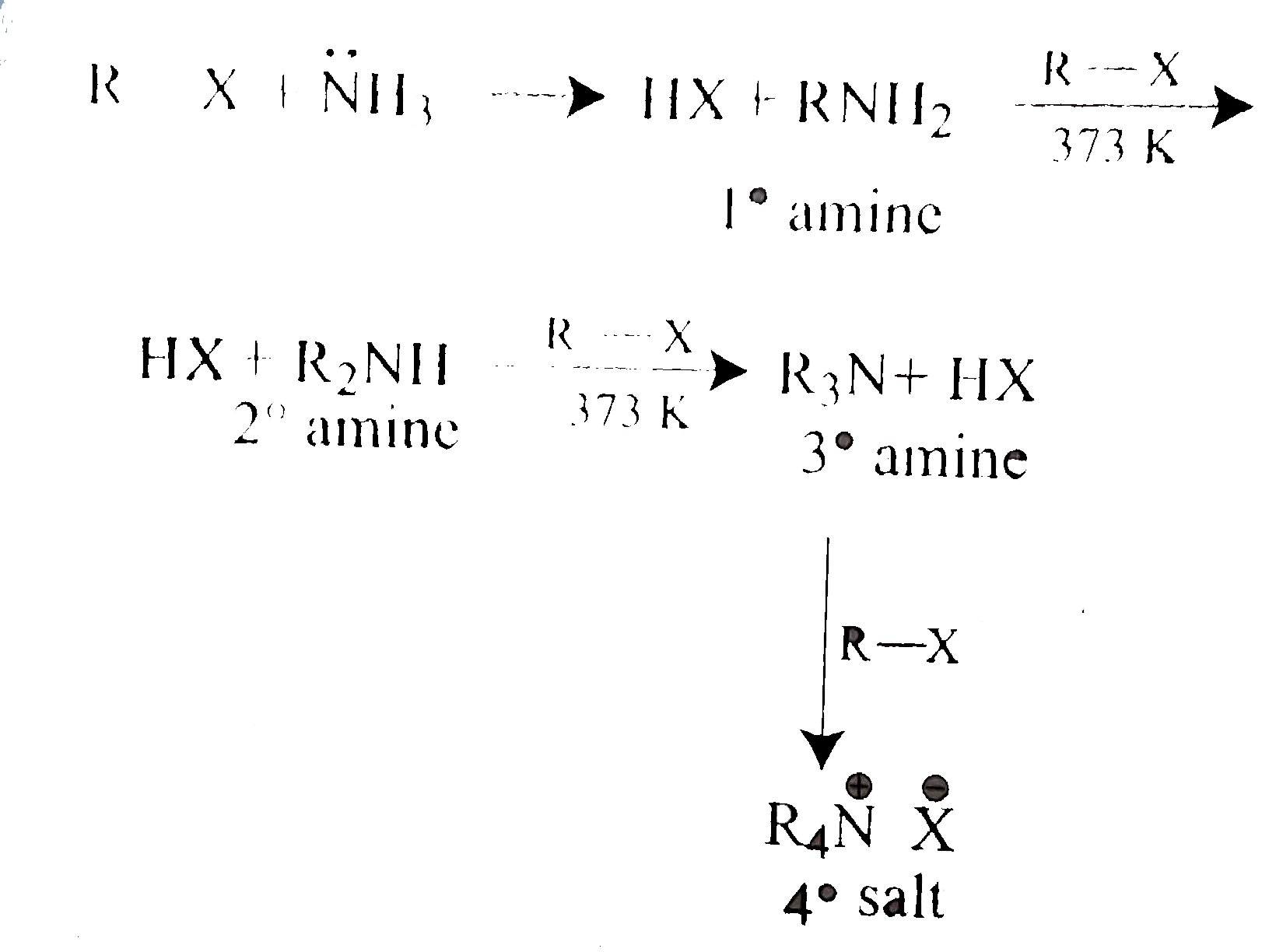In the reaction, R−≡−RBirch−−−−−→reduction  source of two H atoms which are added to alkyne to give trans-alkene is:
source of two H atoms which are added to alkyne to give trans-alkene is:
(a) NH3
(b) EtOH
(c) Et−NH2
(d) Both (a) and (c)
The correct Answer is:D
Step by step video, text & image solution for In the reaction, R--=-Roverset(Birch)underset(reduction)rarr source of two H atoms which are added to alkyne to give trans-alkene is: by Chemistry experts to help you in doubts & scoring excellent marks in Class 11 exams.
Updated on:21/07/2023Topper's Solved these Questions
- ALKYNESBook:CENGAGE CHEMISTRYChapter:ALKYNESExercise:Exercises (Archives - Single Correct Answer Type)
Explore 6 Videos
- ALKYNESBook:CENGAGE CHEMISTRYChapter:ALKYNESExercise:Exercises (Archives - Fill in the Blanks Type)
Explore 3 Videos
- ALKYNESBook:CENGAGE CHEMISTRYChapter:ALKYNESExercise:Exercises (Multiple Correct Answers Type)
Explore 25 Videos
- ALKENES AND ALKADIENESBook:CENGAGE CHEMISTRYChapter:ALKENES AND ALKADIENESExercise:Single correct Answer
Explore 14 Videos
- APPENDIX - INORGANIC VOLUME 1Book:CENGAGE CHEMISTRYChapter:APPENDIX - INORGANIC VOLUME 1Exercise:chapter-7 Single correct answer
Explore 1 Video
Similar Questions
a) Give the structural formulae of the alkene (C8H16) which on reductive ozonolysis gives butan-2-one.
b) Write the structure of that compound which on reductive ozonolysis gives propane-1,3-dial.
c) Write the products of the reductive ozonlysis of mesitylene with i) (Zn/CH3COOH)
ii) NaBH4 or LAH.
d) Give the structural formulae of the alkene which on reductive ozonolysis gives a mixture of 2-methyl-butanal and pentan-2-one.
View SolutionThe following reaction is called
2R−C≡C−HCuX2−−−−→PyridineR−C≡C−C−R
View Solution
Knowledge Check
Which of the following reactions would give trans-alkene ?
 .A(I)B(II)C(I),(III)D(II),(IV)
.A(I)B(II)C(I),(III)D(II),(IV)In the reaction
(CH3)2CH−CH∣CH3−+S(CH3)2BrHeat−−→
Which of the following alkenes is formed in the largest amount ?A(CH3)2C=CHCH3BCH2=CH3∣C−CH2CH3C(CH3)2CHCH=CH2DNo alkene formationIn the conversion of alkyne to trans-alkene by Birch reduction using alkali metals (such as Na or K) in liquid NH3 and alcohol (MeOH or EtOH),
R−≡−RNa+liq.NH3−−−−−−−−→+EtOH
the mechanism takes place in the formation of intermediate species in the following sequence:A(a) Radical anion → vinylic radical → trans-vinylic anion → trans-alkeneB(b) Radical anion → trans-vinylic anion → vinylic radical → trans-alkeneC(c) Vinylic radial → radical anion → trans-vinylic anion → trans-alkeneD(d) Vinylic radical → trans-vinylic anion → radical anion → trans-alkene
Which of the statements are correct about the reaction ?
 (A) H⊕−−→Δ (B) H2O⊕−−−→ (C ) Δ−−→ (D)
(A) H⊕−−→Δ (B) H2O⊕−−−→ (C ) Δ−−→ (D)
View SolutionEtCOCl(A)(i)H2N.OH−−−−−−−→(ii)ӨOH(B)EtOH−−−→(C)
Which of the following statements are correct about the given reaction ?
View SolutionWhich A gives red colour in the reaction
A(i)HNO2−−−−−−−−→(ii)NaOH red colur ?
View SolutionConsider the Hofmann ammonolysis reaction :
R−X+..NH3→HX+RNH21∘amineR−X−−→373K

If R=C2H5, the correct of basic character of the above amines in aqueous medium is :
View SolutionReduction of an alkyne to the double bond stage can yield a cis alkene or trans alkene (except in cases where triple bond is at the end of the chain ) Reduction of alknes with sodium or lithium in liquid NH3 yields predominantly trans alkene.

Hydrogenation of alkynes with Lindlar's catalyst or a nickel boride called P2 catalyst yeilds is alkene (as high as 98%)

If Pd/C/H2 is used in the absence of a catalyst poison, two equivlanet of H2 are added forming alkanes.
Reduction of alkynes to trans alkene by Li/NH3 is carried out in the presence of dry ice. This is because of
View Solution

